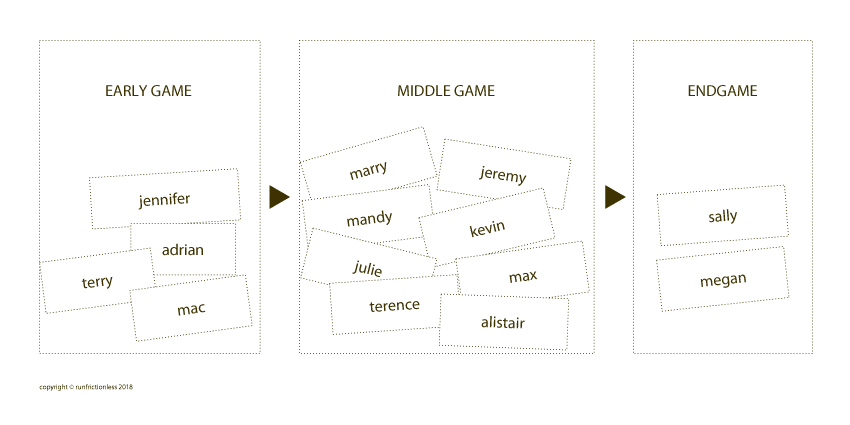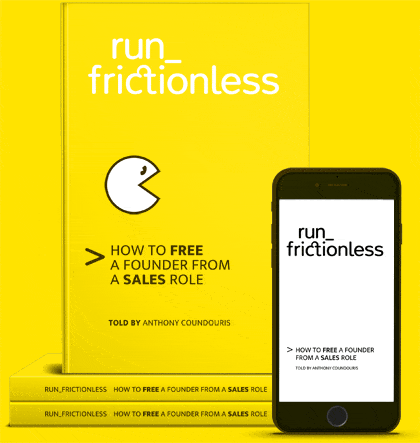
Scale a business with an early, middle and endgame
>
Scale a business with an early, middle and endgame
Let’s face it, sales systems can look damn complex. They can contain many customer interactions. By grouping interactions into an early, middle and endgame, makes it easier to scale the business.
Salespeople get a read on what’s going on in the pipe, and what to do next.
If you serve small businesses, you could be managing 15 interactions. If you serve enterprise firms, the could number 25 or more interactions before a customer is created. Each interaction must be managed. The salespeople need to understand the goal of the interaction and the interaction needs to be wrapped with words and pictures.

Organizing each interaction into stages gives the salesforce clarity about how to move a lead.
For example, if you are designing an online sales system for a SaaS business, you could train an on-demand salesforce to handle online chat in the early game, demo artists to cover the middle game, and heavy-hitters to close in the endgame.
This is called augmenting your salesforce. It is required to scale your business because it gives you access to a larger workforce.
A single salesperson is not responsible for the entire customer journey. The reason is that the skills required for sales success in the early game, differ from the skills required in the middle or endgame.
Fella, your early game is lousy
The definition of the early, middle and endgame will differ from startup to startup. Generally, the early game handles first-time interactions with a customer. These are customers who complete an online web form, call in via phone, decide to live chat, or drop an invitation to talk on Twitter.
Maybe your salesperson likes to spend their mornings playing Candy Crush. Or talking to their mother-in-law about the weekend barbecue. If so, chances are they are slow to the early game. They reply to email inquiries ‘tomorrow’ and monitor the chat box when they ‘get a moment’.
A simple tactic for sales success in the middle game is to respond to leads before competitors. Often a customer will decide to go with a provider with the inferior product, just because their people respond before the competition.
All eyes on the middle game
The middle game is a gestation period, a time when the customer is evaluating competitors, including the option of ‘sticking with the status quo’. The middle game as the word suggests sits between the early and the endgame. The majority of customer interactions are normally hosted by the middle game.
The endgame is where the customer has shortlisted suppliers and is preparing to close out their buying decision.
Customers get lost in the middle game. Other customers become inactive, while some customers hide. It is hard work to get customers moving to the endgame, especially if your middle game provides no segmentation.
For this reason, the temptation in the middle game is to send beg mail. It is common practice for salespeople to pester the customer with beg mail. This behavior is common in businesses lacking a sales process. Salespeople resort to high-pressure sales techniques to close the deal or beg for a decision.
You've got a stunning endgame
Some salespeople are awesome at closing a customer sale. Having a great endgame where you collect the cash from a customer relies on setting up the early and middle game properly. If the chat agents were lousy in the early game, and the product demo artists unconvincing in the middle game, the sale falls apart in the endgame.
Shoot a goal from the early to the endgame
Some salespeople have a knack for detecting when a customer wants the express lane. This is the customer who is already sold and is waiting at the counter with a fist full of dollars, waiting to make a payment. A well-designed sales system will help identify these customers However, a salesperson with zeal is still required to overcome friction.
Early we identified middle games are fraught with friction, often resulting in a 30% drop off. Shooting a goal direct to the endgame avoids the middle game altogether.
Key takeaways
Learn more





